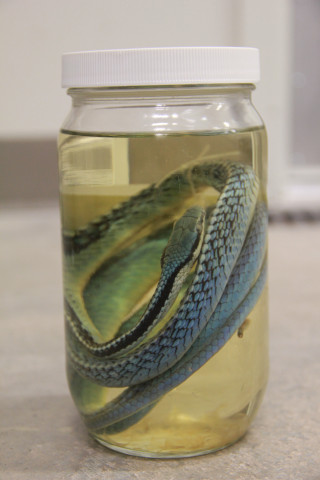Identification
As the specimens reach the museum, they are grouped and processed in various ways before they are placed in the collections rooms. These procedures are necessary for organization, documentation and to assure complete specimen preparation for future research. Follow the steps one by one to see how our NHMU vertebrate zoology curators ensure the integrity of their collections.
Step 1: Taxonomic identification
After animals have been captured, scientists in the field identify each specimen to the best of their ability and then determine in which way the specimen will be preserved based on the protocols of the research and/or the quality of the specimen.
Steps 2: Collection type determines preparation

There are 3 general types of vertebrate specimens: mammals, herpetofauna (reptiles, fishes and amphibians), and birds. Once the animal has been identified, it is then decided how it will be preserved and stored. This process generally happens in the field, directly after capture, but can also take place in the lab.
There are 2 types of storage: wet and dry.
Many of the herpetofauna and some of the mammals are stored in the wet collection which means that they are fixed with formalin(a water, formaldehyde solution) to preserve/embalm the specimen. It is then submerged in 70% ethyl alcohol. This type of storage can denature the DNA so this is now used less frequently than it had been in the past. If this storage is necessary, which is the case for fishes and herps, tissue is now typically extracted from an animal prior to wet storage specifically for DNA analysis requests.
Most of the mammal and bird study skins and skeletons as well as some of the herpetofauna are stored in the dry collections. All specimens are frozen for up to a week to prevent insects from deteriorating it or any other specimen.